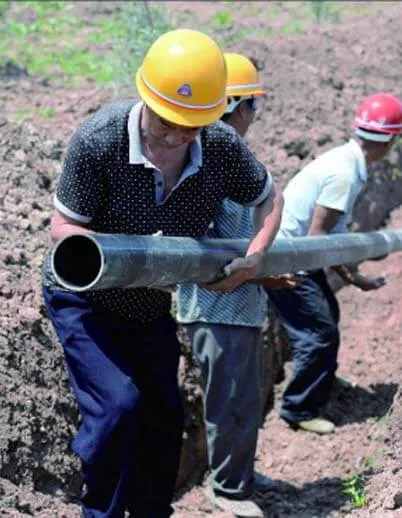Oct . 05, 2024 06:42 Back to list
Comparison of PVC Pipe and PPR Pipe for Plumbing Applications and Durability
PVC Pipe vs. PPR Pipe A Comprehensive Comparison for Service Applications
When it comes to plumbing and piping systems, the choice of material is crucial for ensuring longevity, durability, and efficiency. Two of the most common types of pipes used today are Polyvinyl Chloride (PVC) pipes and Polypropylene Random Copolymer (PPR) pipes. Both offer unique advantages and are suited for various applications, but understanding their differences can significantly impact the performance of a piping system.
Material Composition
PVC pipes are made from a plastic polymer that is known for its robustness and versatility. They are lightweight, making them easy to handle and transport. PVC is also resistant to corrosion, which makes it ideal for carrying water and other fluids. On the other hand, PPR pipes are made from a type of polypropylene that boasts excellent thermal resistance. PPR is less prone to temperature fluctuations, making it suitable for hot and cold water systems.
Durability and Lifespan
When considering the lifespan of piping materials, both PVC and PPR offer impressive durability. PVC pipes typically have a lifespan of 50 to 70 years, depending on environmental conditions. However, they can become brittle when exposed to UV rays unless properly treated. In contrast, PPR pipes can last over 100 years, providing an edge in longevity. This superior lifespan is attributed to PPR's resistance to thermal aging and its ability to withstand high temperatures.
Installation and Maintenance
The installation process for both types of pipes is relatively straightforward, but there are some differences. PVC pipes are usually joined using solvent cement, making them easy to install but potentially messier. Conversely, PPR pipes are typically joined through a fusion process, which creates a seamless and robust bond. This method of joining reduces the risk of leaks and is often considered more reliable in high-pressure systems.
pvc pipe vs ppr pipe service

Maintenance for both pipe types is generally minimal. PVC pipes are resistant to chemical corrosion, making them an excellent choice for transporting various substances. PPR pipes are also resistant to scaling and corrosion but can be susceptible to damage from certain solvents. Regular inspections are advisable to ensure that the piping system operates efficiently.
Cost-Effectiveness
From a financial perspective, PVC pipes tend to be less expensive upfront, making them a popular choice for budget-conscious projects. However, when considering the long-term investment, PPR pipes may offer better value due to their longevity and reduced maintenance costs. Over time, the initial cost savings with PVC may be outweighed by the need for replacements or repairs.
Application Suitability
The choice between PVC and PPR pipes can depend heavily on the intended application. PVC is widely used for drainage, irrigation, and certain industrial applications, thanks to its strength and cost-effectiveness. PPR, however, is favored in domestic plumbing systems, heating systems, and distribution of potable water because of its ability to handle high temperatures and pressures safely.
Conclusion
In conclusion, both PVC and PPR pipes have their merits and specific use cases. PVC pipes are well-suited for cost-effective drainage and irrigation projects, while PPR pipes deliver long-lasting performance in plumbing and heating applications. Ultimately, the choice between PVC and PPR should be based on the specific requirements of the project, budget considerations, and the desired lifespan of the piping system. With careful evaluation, one can select the most appropriate piping material, ensuring a reliable and efficient service.
-
High-Quality PVC Borehole Pipes Durable & Versatile Pipe Solutions
NewsJul.08,2025
-
High-Quality PVC Perforated Pipes for Efficient Drainage Leading Manufacturers & Factories
NewsJul.08,2025
-
High-Quality PVC Borehole Pipes Durable Pipe Solutions by Leading Manufacturer
NewsJul.08,2025
-
High-Quality PVC Borehole Pipes Reliable PVC Pipe Manufacturer Solutions
NewsJul.07,2025
-
High-Quality UPVC Drain Pipes Durable HDPE & Drain Pipe Solutions
NewsJul.07,2025
-
High-Quality Conduit Pipes & HDPE Conduit Fittings Manufacturer Reliable Factory Supply
NewsJul.06,2025

